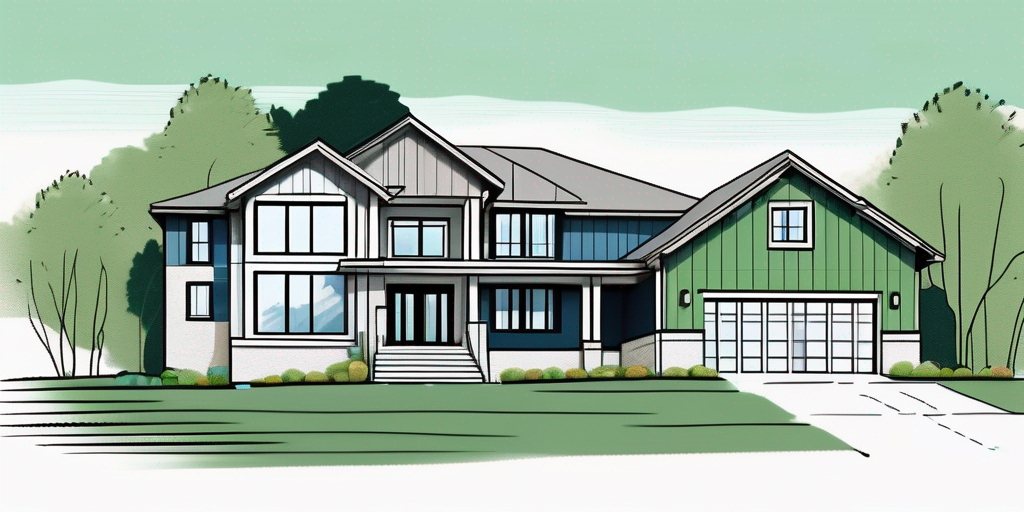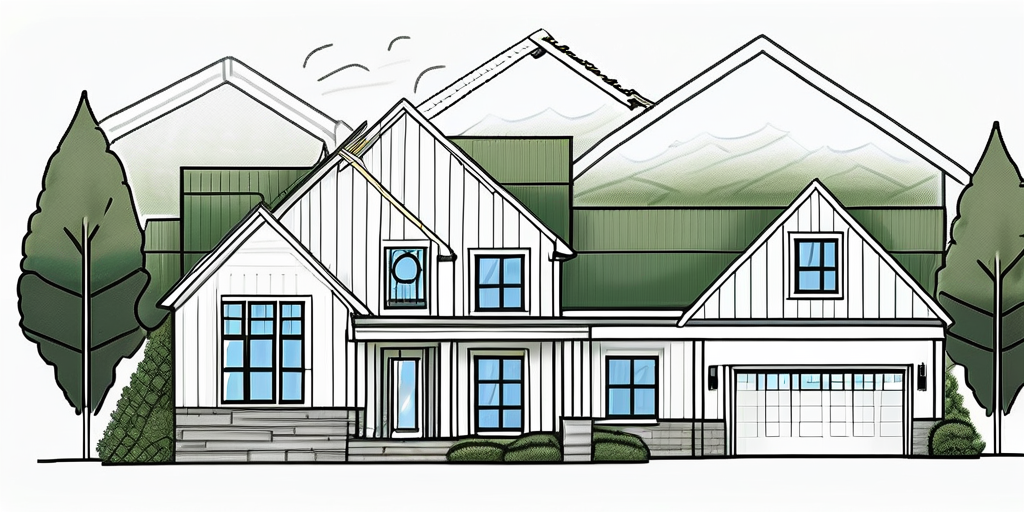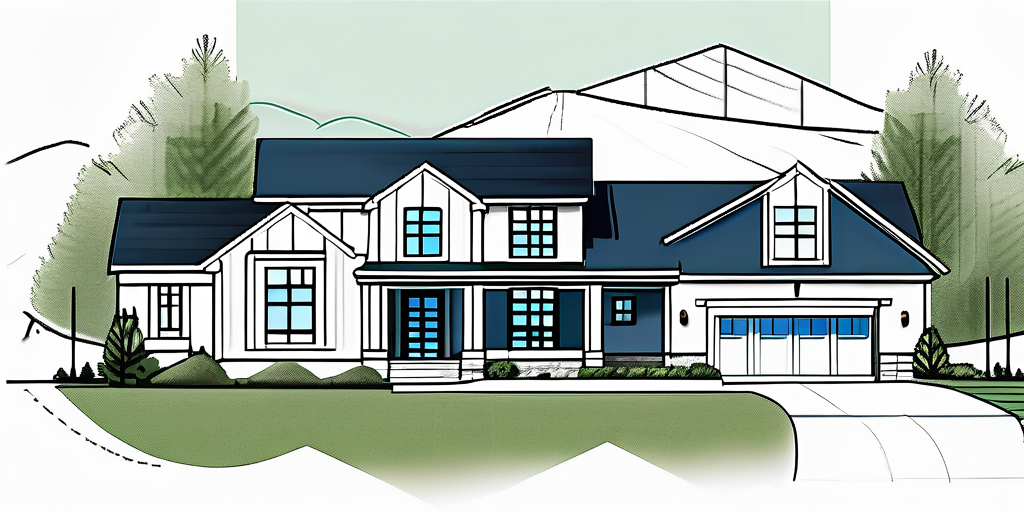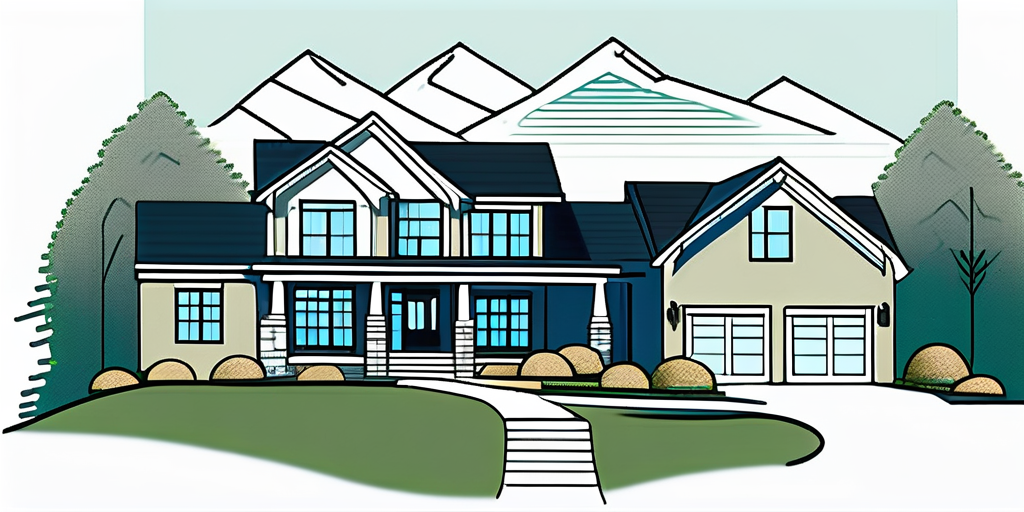
Building a custom home is an exciting journey that allows you to create a space tailored perfectly to your taste and lifestyle. In Tennessee National, a growing community renowned for its picturesque landscapes and vibrant atmosphere, custom home building can be a rewarding experience. This comprehensive guide will walk you through the essential steps involved in building your dream home, from understanding the basics to overcoming common challenges.
Before diving into custom home building, it's crucial to understand what it entails. Custom home building offers the flexibility to design and construct a house that meets your unique requirements. This process involves collaboration between homeowners, architects, and builders to ensure that the vision becomes a reality. The beauty of custom home building lies in its ability to reflect your personal style and preferences, making it a true representation of who you are. From the layout to the finishes, every detail can be tailored to fit your lifestyle.
Effective planning forms the backbone of any successful custom home project. It allows you to identify your priorities, budget, and timeline. By defining your goals at the outset, you can avoid common pitfalls that often derail projects. It serves as a roadmap, enabling you to make informed decisions and minimizing surprises along the way. Additionally, a well-thought-out plan can enhance communication among all parties involved, ensuring that everyone is on the same page and working towards a shared vision.
This planning phase also includes researching local building codes and regulations specific to Tennessee National. Understanding these requirements early can save time and prevent costly revisions later in the process. Furthermore, engaging with local authorities can provide insights into any upcoming developments in the area, which might influence your decisions on location and design. Being proactive in this phase can lead to a smoother construction process and a more enjoyable experience overall.
When embarking on your custom home building journey, several key elements should be top of mind:
By keeping these elements in mind, you'll be equipped to make decisions that will pay off in both comfort and value. It's also beneficial to think about energy efficiency and smart home technologies that can enhance your living experience. Incorporating features such as solar panels, energy-efficient appliances, and smart thermostats not only reduces your carbon footprint but can also lead to significant savings on utility bills over time. Moreover, these elements can increase the resale value of your home, making it a wise investment for the future.
Additionally, consider the flow and functionality of your space. Open-concept designs are popular for their ability to create a sense of spaciousness and encourage social interaction, while dedicated rooms can provide privacy and quiet. Think about how you and your family will use each space and how to best facilitate those activities. This level of consideration can transform a house into a home that truly meets your needs and enhances your daily life.
The custom home building process can be broken down into three main phases: pre-construction, construction, and post-construction. Understanding each phase will prepare you for what lies ahead.

The pre-construction phase involves meticulous planning and preparations before breaking ground. During this time, homeowners work closely with designers and builders to finalize architectural plans, select materials, and establish a budget.
This phase also includes obtaining the necessary permits and conducting site evaluations. It’s important to have a contingency plan in place, as unexpected hurdles may arise during inspections or approvals. Additionally, this is the time to consider energy-efficient options and sustainable building practices, which can not only reduce your environmental footprint but also save you money in the long run. Engaging with professionals who specialize in green building can provide valuable insights into the latest technologies and materials available.
When it's time to start building, you’ll witness your plans come to life. The construction phase is when your vision begins to materialize into an actual structure. It generally consists of several stages:
Regular communication with your builder during this phase can help ensure the project remains on schedule and within budget. It’s also vital to conduct inspections at various points to assess quality control. As the construction progresses, you may want to visit the site frequently to see how your dream home is taking shape. This not only allows you to visualize the final product but also fosters a strong relationship with your builder, making it easier to address any adjustments or changes that may arise.
Once construction is complete, the post-construction phase begins, which includes final inspections and the walk-through with your builder. This is your opportunity to ensure everything meets your expectations and address any remaining concerns.
After this inspection, you’ll receive the necessary certificates of occupancy, officially making your house a home. It’s also a good time to familiarize yourself with the maintenance requirements of your new home, including warranties on various systems and materials. Many builders provide a homeowner's manual that outlines care instructions and tips for upkeep, ensuring that your investment remains in excellent condition for years to come. Finally, it's time to celebrate and, of course, move in!
Building a custom home requires a talented team that can turn your dreams into a reality. Finding the right professionals is crucial for a successful project.

Architects bring your vision to life by creating detailed plans and specifications for your home. They are essential in maximizing space and ensuring your design adheres to local zoning laws.
Collaboration with your architect allows you to express your ideas clearly, and they can offer valuable insights on design elements and materials that fit your budget and aesthetic preferences. Furthermore, architects often have a deep understanding of sustainable building practices, enabling you to incorporate eco-friendly features into your home. This could include energy-efficient windows, solar panels, or rainwater harvesting systems, which not only benefit the environment but can also reduce long-term utility costs.
A trustworthy construction company will play an essential role in the execution of your plans. Consider factors like experience, reputation, and the quality of their previous projects.
It’s wise to request references and reviews from past clients to gauge their reliability and professionalism. A good construction firm should also provide a transparent timeline and budget to help you maintain control over your project. Additionally, a reputable construction company will have established relationships with subcontractors and suppliers, which can lead to better pricing and quality materials. This network can be invaluable in ensuring that your project runs smoothly and stays on schedule, as they can quickly address any issues that may arise during the build.
Once the structural aspects are underway, working with an interior designer can help you make aesthetic choices that reflect your style. Interior designers can assist in selecting colors, materials, and furnishings that complement your new home.
They will consider your personal preferences while ensuring that design choices harmonize with functionality and comfort. This partnership enriches the overall design experience and, ultimately, the satisfaction of living in a well-designed space. Moreover, interior designers often have access to exclusive resources and furnishings that may not be available to the general public. This can elevate the uniqueness of your home, providing custom solutions that align perfectly with your vision. They can also help you navigate the complexities of spatial planning, ensuring that each room flows seamlessly into the next while maximizing both beauty and practicality.
Understanding financing options is vital to realizing your custom home dream. Home financing can be complex, but with the right knowledge, you can choose the option that best suits your needs. Whether you are a first-time homebuyer or looking to build your dream retirement home, being well-informed about your financing choices will empower you to make the best decisions for your future.

Construction loans differ from traditional mortgages, as they are used specifically for building homes. They are typically short-term loans that cover the costs of construction until the home is completed and can be converted into a permanent mortgage. These loans often require interest-only payments during the construction phase, which can help ease the financial burden while your home is being built.
Explore various financing options, including traditional banks, credit unions, and specialty lenders. Each lender may offer different terms and interest rates, so it’s beneficial to shop around and compare offers. Consulting a financial advisor can help clarify your options and guide you toward a financing plan that suits your financial situation. Additionally, some lenders may provide specialized programs for custom home builds, which can include favorable terms for qualified buyers.
Developing a realistic budget is essential in the custom home building process. Make a detailed list of estimated costs, including land, construction, permits, and interior finishes. It's also wise to include a contingency fund of about 10-15% for unexpected expenses. This buffer can be crucial, as unforeseen issues like site preparation challenges or changes in material costs can arise during construction.
Being transparent with your builder about your budget helps in making decisions that will keep your project on track financially. Regular financial reviews will also ensure you can adjust if costs start to rise significantly. Moreover, consider the long-term costs associated with your custom home, such as property taxes, insurance, and maintenance, as these can significantly impact your overall financial picture. By planning for both the immediate and future expenses, you can create a more comprehensive financial strategy that supports your custom home journey.
Even with thorough planning, challenges can arise during the custom home building process. Anticipating these obstacles can make your journey smoother.
Construction delays can occur for various reasons, including weather, supply chain issues, or contractor schedules. Open communication with your builder can help you understand the causes and the expected timeline adjustments.
It’s important to remain patient and flexible during these times. Keep in mind that safety and quality should take precedence over rushing projects to meet deadlines. Additionally, consider building a buffer into your timeline to account for potential delays. This proactive approach can alleviate stress and help you maintain a positive outlook throughout the process. Being prepared for the unexpected can also allow you to enjoy the journey of building your dream home rather than feeling overwhelmed by setbacks.
Throughout the building process, you may wish to make changes to your original plans. While this is common, last-minute modifications can lead to delays and additional costs. A well-structured change order process with your builder can help accommodate these desires without disrupting progress.
Effective communication with your team will ensure that you address changes at appropriate stages, minimizing challenges while maintaining the integrity of your initial vision. Moreover, it can be beneficial to create a priority list of changes you would like to make, distinguishing between must-haves and nice-to-haves. This way, if adjustments need to be made due to time or budget constraints, you can focus on the most critical elements that will enhance your home’s functionality and aesthetic appeal.
In summary, building a custom home in Tennessee National is an exciting and fulfilling endeavor. By understanding the fundamentals, assembling a talented team, securing appropriate financing, and anticipating challenges, you can create a beautiful home that reflects your unique lifestyle and preferences. Embracing the process with an open mind and a clear vision will help you navigate the complexities of custom home building, ensuring that the final result is a true reflection of your dreams.